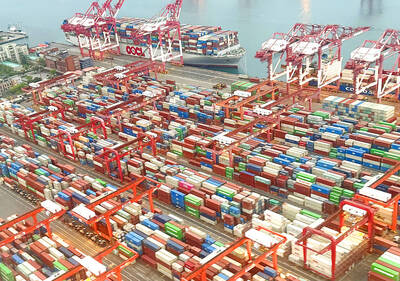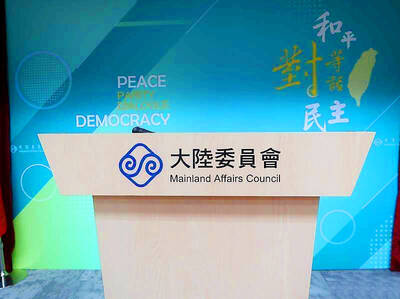Fifty years after the first Japanese car coughed its way up the Hollywood Hills, it's hard to imagine a time when the Big Three US automakers sold 95 percent of the cars on the road.
About half of new car sales today are now going to foreign brands and Toyota, which overtook Chrysler last year, is widely expected to knock Ford Motor Co out of the No. 2 spot this year.
Meanwhile, the mighty United Auto Workers (UAW) union, which for generations had helped set the standard for worker benefits and wages in the US, is in the midst of ceding significant ground in the face of competition from non-unionized foreign shops.
"The first wave was a price wave. Then it was a fuel economy wave. Then it became a quality wave. And at every wave the Japanese imports built a position that was very strong," said David Cole, chairman of the Center for Automotive Research.
"What has developed since then is the inability [of the Big Three] to compete against well-financed, global companies that had significantly lower costs," he said.
It didn't have to be that way.
The first car Toyota Motor Sales introduced after opening its US operations on Oct. 31, 1957, was a complete flop.
Ford, Chrysler and General Motors Corp were in their golden age, building elegant status symbols which helped cement the US love affair with cars and shape the structure of US cities.
Japanese products were seen as cheap and of poor quality, and Toyota did little to change these perceptions.
Used as taxis on Tokyo's bumpy post-war roads, the Toyopet was uncomfortable, plain and had an engine so weak that "loud, threatening noises radiated from under the hood" when it was driven up steep hills, Toyota admitted in a retrospective.
Toyota had sold just 2,314 Toyopets when it was replaced in 1965 with the Corona, which was designed for US roads and drivers.
The Corona was a hit, pushing Toyota into the number two spot for import cars by 1969. But import sales comprised just 11 percent of the US market and remained dominated by Volkswagen, which sold nearly five times as many cars as Toyota.
It wasn't until the oil crises and economic downturns of the 1970s that the inexpensive, fuel efficient cars produced by Toyota and other Japanese automakers began to pose a serious challenge.
By 1979, the situation was critical in Detroit when Chrysler, on the verge of bankruptcy, had to be bailed out by the federal government with US$1.5 billion in guaranteed loans.
As US plants were shuttered in the face of growing sales of Japanese brands and Japanese investors started buying landmarks like the Rockefeller Center, a strong backlash was growing.
Frustrated auto workers, and even politicians, took sledgehammers to Japanese cars in publicity stunts and private moments of frustration.
But while the Japanese may have been aggressive in pursuing sales, much of the damage done to US automakers was self-inflicted, said Jeremy Anwyl, president of Edmunds.com.
"If you look at the products the Big Three brought out ... you had car after car being introduced that were a disaster after a disaster," he said in a telephone interview.
"You had engines that would break down at just 30,000 miles [48,280km]," he said. "This stuff went on for 15 years before they started turning things around."
Just as the Big Three were finally starting to address their quality and productivity problems, another economic downturn hit in 2000 and then gas prices started to rise again.
Consumers shied away from the gas-guzzling sports utility vehicles whose high margins had subsidized the Big Three's underperforming small cars.
And the market share of US automakers, which had spent much of the 1980s and early 1990s in the mid to low 1970s, dropped to 66 percent in 2000, 55 percent last year, and is now hovering at 50 percent, according to Ward's Auto.
Tens of thousands of autoworkers have lost their jobs as plant after plant was shuttered, devastating scores of midwestern towns.

MORE VISITORS: The Tourism Administration said that it is seeing positive prospects in its efforts to expand the tourism market in North America and Europe Taiwan has been ranked as the cheapest place in the world to travel to this year, based on a list recommended by NerdWallet. The San Francisco-based personal finance company said that Taiwan topped the list of 16 nations it chose for budget travelers because US tourists do not need visas and travelers can easily have a good meal for less than US$10. A bus ride in Taipei costs just under US$0.50, while subway rides start at US$0.60, the firm said, adding that public transportation in Taiwan is easy to navigate. The firm also called Taiwan a “food lover’s paradise,” citing inexpensive breakfast stalls

TRADE: A mandatory declaration of origin for manufactured goods bound for the US is to take effect on May 7 to block China from exploiting Taiwan’s trade channels All products manufactured in Taiwan and exported to the US must include a signed declaration of origin starting on May 7, the Bureau of Foreign Trade announced yesterday. US President Donald Trump on April 2 imposed a 32 percent tariff on imports from Taiwan, but one week later announced a 90-day pause on its implementation. However, a universal 10 percent tariff was immediately applied to most imports from around the world. On April 12, the Trump administration further exempted computers, smartphones and semiconductors from the new tariffs. In response, President William Lai’s (賴清德) administration has introduced a series of countermeasures to support affected

CROSS-STRAIT: The vast majority of Taiwanese support maintaining the ‘status quo,’ while concern is rising about Beijing’s influence operations More than eight out of 10 Taiwanese reject Beijing’s “one country, two systems” framework for cross-strait relations, according to a survey released by the Mainland Affairs Council (MAC) on Thursday. The MAC’s latest quarterly survey found that 84.4 percent of respondents opposed Beijing’s “one country, two systems” formula for handling cross-strait relations — a figure consistent with past polling. Over the past three years, opposition to the framework has remained high, ranging from a low of 83.6 percent in April 2023 to a peak of 89.6 percent in April last year. In the most recent poll, 82.5 percent also rejected China’s

PLUGGING HOLES: The amendments would bring the legislation in line with systems found in other countries such as Japan and the US, Legislator Chen Kuan-ting said Democratic Progressive Party (DPP) Legislator Chen Kuan-ting (陳冠廷) has proposed amending national security legislation amid a spate of espionage cases. Potential gaps in security vetting procedures for personnel with access to sensitive information prompted him to propose the amendments, which would introduce changes to Article 14 of the Classified National Security Information Protection Act (國家機密保護法), Chen said yesterday. The proposal, which aims to enhance interagency vetting procedures and reduce the risk of classified information leaks, would establish a comprehensive security clearance system in Taiwan, he said. The amendment would require character and loyalty checks for civil servants and intelligence personnel prior to